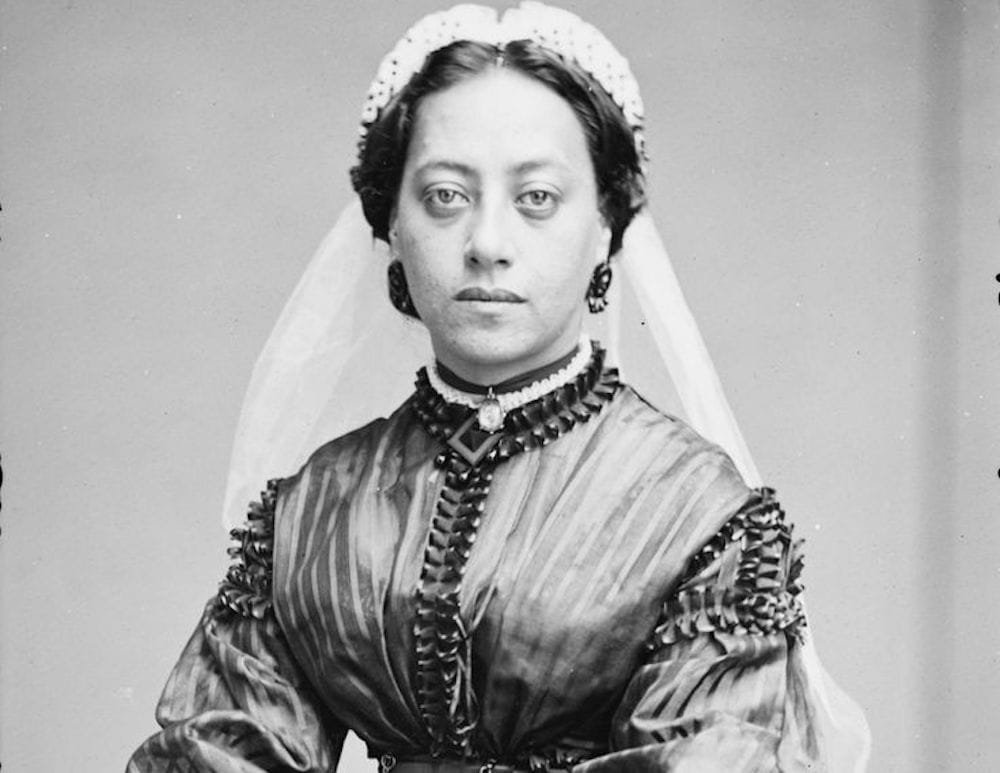The Characters
Concepción Arguello (1791 - 1857) – Rose of the Presidio is California’s First Native-born Nun
Known throughout Spanish California as Concha, “La Favorita,” Commandant Arguello’s bright and beautiful daughter was betrothed to Russian explorer, Nikolai Rezanov in 1806 at Mission Dolores. He would lose his life seeking permission to marry her from the Czar, the Pope and the King of Spain. She would remain faithful to his memory, refusing no less than 5 marriage proposals. For 19 years she was a Franciscan “lay sister” known as “La Beata” and traveled on horseback from Mission to Mission working as a teacher, healer and midwife. Finally, at the age of 60, she became Sister Maria Dominica, O.P., California’s first native-born nun.
Juana Briones de Miranda (1802 - 1889) – Pioneering Rancher, Healer, Entrepreneur
One of San Francisco’s first and most successful entrepreneurs, Juana Briones arrived here when her soldier father was posted to the Presidio. She married a soldier, Apolinario Miranda and they established a farm at the Presidio’s El Polin springs and later built a house at Yerba Buena, today’s North Beach. Of her 11 children, 8 survived to adulthood and she adopted an orphaned Native American girl. Briones became widely known as a Curandera, (healer) and midwife. After separating from her abusive husband and dropping his surname, Juana bought a 4,400-acre ranch in what is now Palo Alto.
Mary Ellen Pleasant (1814 - 1904) – Mother of Human Rights in California & Co-Founder of the Underground Railroad
In 1827, 10-year-old Mary Ellen Pleasant who’d become famous as “the Harriet Tubman of California,” became an indentured servant and later a member of the prominent Hussey family, Quaker abolitionist shopkeepers in Nantucket. Her career as a “slave stealer” began when she married James Smith, a plantation owner who freed his slaves. At great risk passing as white, she transported many slaves to Ohio and Canada on the “Underground Railroad.” That work continued when she moved to San Francisco, becoming a prosperous entrepreneur. In 1866, her landmark lawsuit against North Beach & Mission Railroad Co. for racial discrimination went all the way to the state Supreme Court, earning her the moniker of “Mother of Human Rights in California.” Before her death, she confirmed donating $30,000 (close to 1M today) to her former lover John Brown’s attempted slave uprising at Harper’s Ferry in 1859. Her great wealth was depleted, she died in abject poverty in 1904 and is buried in Tulocay Cemetery in Napa.
Lola Montez (1821 - 1861) – Countess Courtesan & Theatrical Sensation
Famous Spanish dancer, actress, courtesan and mistress of King Ludwig of Bavaria, Lola Montez was born Eliza Gilbert in 1821 Ireland, raised in India and educated in England. After 7 tumultuous years that included a failed marriage, love affairs with Franz Liszt and Alexandre Dumas, becoming Countess of Landsfeld in Bavaria and being caught up in a bigamy scandal in England, 30 year old Lola Montez decided to flee to the United States and reinvent herself. Making her way to San Francisco in 1853, Lola became a theatrical sensation, eventually moving to Grass Valley where she inspired and mentored another iconic performer, Lotta Crabtree.
Charlotte “Lotta” Crabtree (1847 - 1924) – Miss Lotta, San Francisco Favorite … Nation’s Darling
Mentored by the great Lola Montez in Grass Valley, young Lotta Crabtree’s career started early touring the gold mining camps as a dancer, singer and banjo player. San Francisco embraced her when the family moved there in 1856. Lotta was paid in gold collected and invested by her mother. Some earnings built fountains, the most famous of which, Lotta’s Fountain erected in 1875, is the scene of annual ceremonies marking the great earthquake of 1906. Lotta would become the richest actress in America. Her final public appearance was in 1915 for Lotta Crabtree Day at the Panama-Pacific Exposition in San Francisco. Her estate in excess of $4M was put in a charitable trust for veterans, aging actors and animals.
Eleanor Dumont (1829 – 1879) – Madame Moustache
Eleanor Dumont, known as Madame Moustache, materialized one night at the roulette table in the Bella Union Melodeon. According to a local journalist of the day, there were only two certainties known about the mysteriously stylish French woman, “She was always alone, and always making money!” She was the first female dealer on the Barbary Coast, famous for dispensing free champagne to the winners and warm milk and kindness to the losers! Sadly, after leaving the Barbary Coast, she committed suicide in 1879 in Bodie, California, leaving a letter stating she was “tired of life.”
Big Bertha Heyman (1851 - 1904) – The Queen of Confidence
The New York City police considered Big Bertha “the boldest and most expert of the many female adventuresses who infest the country.” A con artist of the highest order, Bertha delighted in emptying the pockets of fools who thought they couldn’t be “skinned,” claiming it ministered to her intellectual pride. In and out of prisons and jails, Bertha finally found stardom on the stage of the Bella Union Melodeon where she and her partner, Oofty Goofty delighted audiences with hilarious parodies of Romeo and Juliet and more.
Tessie Wall (1869 - 1932) – San Francisco’s Richest Madam
Tessie Wall was one of San Francisco’s most successful Madams, serving annually as the unofficial “Queen” of the Policeman’s Ball held in the Civic Auditorium. Born and raised in San Francisco, Tessie was known for her fondness for horseracing and her jewelry and antique collecting. Her second husband, Frank Daroux, a political boss and owner of a string of gambling dens, fell victim to Tessie’s jealousy when she shot him after he sued her for divorce. Daroux survived the attack and declined to press charges against Tessie who declared that “she shot him because she loved him.”
Donaldina Cameron (1869 - 1968) – Angry Angel of Chinatown
Credited with saving and educating over 2,000 Chinese immigrant women and girls being trafficked in San Francisco’s notorious Chinatown, Donaldina Cameron became an iconic missionary. The refuge she created was re-named Donaldina Cameron House in 1942. It functions today as a multi-service agency serving San Francisco’s Asian communities with a wide variety of programs. She also founded two homes for Chinese children many of whom were orphans of the rescued women. Cameron risked her life on many occasions when she led the raids on the places the young women were brutally imprisoned.
Alma de Bretteville Spreckels (1881 - 1968) – San Francisco’s “Queen of Culture”
Born into a poor family in San Francisco’s Sunset District, “Big Alma” Spreckels descended from French-Danish aristocracy, which explains in part her great passion for art and culture. An artist and model, she met her husband, sugar magnate Adolph B. Spreckels when she posed for the statue of Victory that stands atop the Dewey Monument in Union Square. The Beaux-Arts style mansion they built in Pacific Heights now home to author Danielle Steel, was once the scene of an infamous “garage sale” to raise money for Alma’s charities, one of which was a museum to house her collection of Rodin sculptures, the Legion of Honor, her gift to the City. Big Alma knew how to live large!
Dorothea Lange (1895 - 1965) – Taking Pictures of Social Injustice
Educated in photography at Columbia University, Lange took off to “see the world” in 1918 but only got as far as San Francisco where a robbery forced her to discontinue her trip and take a job as a photo-finisher. She eventually opened a portrait studio photographing the City’s social elite. She married western painter Maynard Dixon and they had two sons. In 1933, Lange took her camera into the streets to photograph the devastation wrought by the Great Depression. Her White Angel Breadline (1933) led to her to work with the Federal Resettlement Administration where she worked with economist Paul Schuster Taylor whom she would eventually marry. In 1941 giving up a Guggenheim Fellowship, Lange documented the forced evacuation to concentration camps of 120,000 Japanese Americans from the West Coast. This startling work was suppressed and has only recently been made available to the public. The MOMA in New York opened a retrospective of Lange’s work just 3 months after her death in 1965.
Sally Stanford (1903 - 1982) – San Francisco’s Last Great Madam
Herb Caen wrote “The United Nations was founded at Sally Stanford’s whorehouse” because in fact, most of the founding delegates were Stanford’s customers and “informal” negotiations took place in her notoriously lavish bordello at 1144 Pine Street on Nob Hill. Stanford, who in her lifetime changed her name more often than most people change their socks, was known for her business acumen, pluck and extraordinary ability to charm the birds out of the trees with her witty repartee. She authored an entertaining autobiography, Lady of the House and ended up owning the Valhalla Restaurant in Sausalito as well as becoming a councilmember and then mayor of Sausalito. You can still “have a drink on Sally” at the drinking fountain commissioned in honor of Sally and her dog Leland at the Sausalito Ferry Pier.












